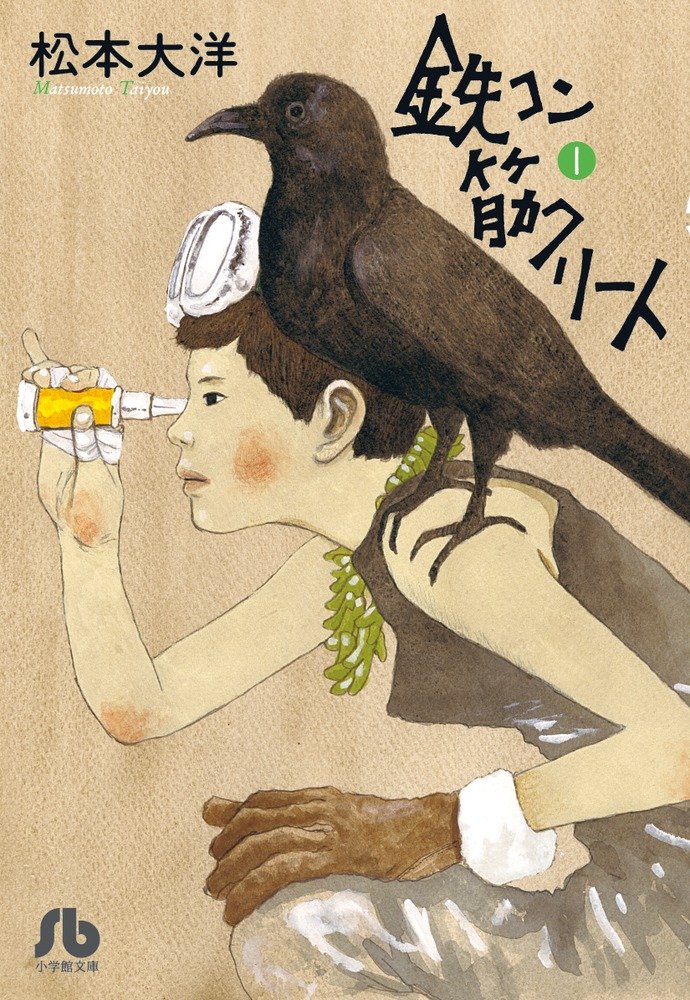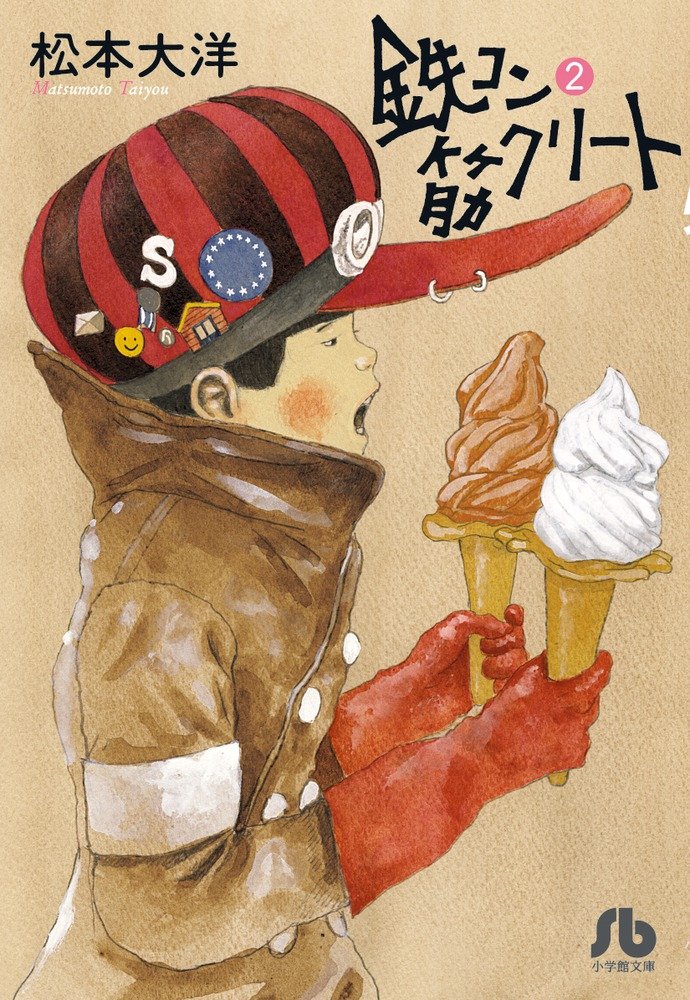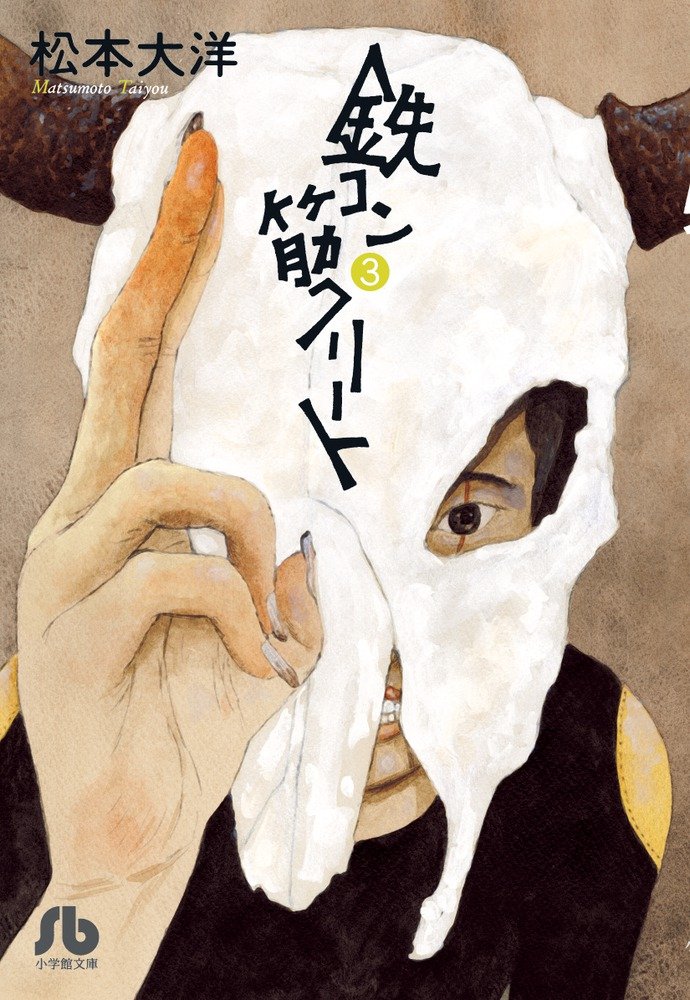- English
- 日本語
Taiyō Matsumoto’s Tekkonkinkreet
Commentary for pocket edition by Michael Arias
In the interest of full disclosure, I’ll be completely honest. In 1995, when I first encountered Taiyō Matsumoto’s Tekkonkinkreet, I was a complete manga neophyte. And even now, my knowledge of the medium remains very limited. Of course, since discovering Tekkonkinkreet, I’ve read everything I could of Taiyō’s, and even dug into the work of some of his contemporaries. But beyond that, I’ve read just a few titles that have crossed my path over the years—a hodgepodge of works current, classic, obscure, exceptional, and mediocre. I am not a manga fan by any means, nor did I grow up reading comics like so many of my generation in Japan. So you see, I’m unable to speak authoritatively of Taiyō's place within the manga macrocosm. And, I’m embarrassed to admit, it’s difficult for me even to discuss Tekkonkinkreet objectively, divorced from the enormous impact this unique work has had on my life. What I can say without hesitation though is that I absolutely love Tekkonkinkreet. There it is.
I first stumbled upon Tekkonkinkreet by chance, and I might have passed it by had it not been for a friend's enthusiastic recommendation. “You have to read it,” he insisted. “I can’t explain, but it'll make you cry.” I was intrigued, but skeptical. (“It’ll make you cry”?) But, as I read it, I found myself totally unprepared for all the emotions Tekkonkinkreet would awaken in me. A difficult-to-summarize story of two orphan heroes swept up in the turmoil of the urban development transforming their retro-future town, Tekkonkinkreet delivered such as few other works of art I have encountered. Perhaps more to the point, it was absolutely cinematic! Cinemascope cinematic. Surround-sound cinematic.
Anthony Weintraub, the screenwriter of my filmed adaptation, characterized Tekkonkinkreet as a story about the importance of human connection, of choosing love and friendship over a solitary path of destruction. To that I would add that Tekkonkinkreet teaches us the value of innocence and hope over corruption and cynicism. The choice between such opposing extremes is embodied not only in Tekkonkinkreet's young heroes, White and Black, but also in its other yin-yang pairings–Rat and Snake (old world values versus progress), Kimura and Rat (youth versus experience), and so on. Taiyō's fixation on duality is evident again in the casts of many other works: Tekkonkinkreet's White and Black have their analogues in Ping Pong's Peco and Smile, Gogo Monster's Yuki and Makoto, and Hana Otoko's Hanao and Shigeo, for example. Though Taiyo’s Sunny is still being serialized at the time of this writing, it seems fair to say that the characters Haruo and Sei also form a similarly contrasting pair.
But to my mind, Taiyō's thematic obsessions are not what make his work stand out. (Most American superhero comics also divide the world into good and evil teams, right?) Taiyō's oeuvre, Tekkonkinkreet in particular, stands out not for how it expresses its archetypes, but for how it subverts convention through its deeply humanistic point of view. Taiyō knows (and so do we), that no one is entirely “black” or “white,” and that the real world is painted shades of grey. Take the setting of Tekkonkinkreet, the neighborhood of Treasure Town, for example. Like the rusty old car where White and Black sleep, Treasure Town has seen better days. It's a dirty and dangerous place, populated by an inglorious supporting cast of gangs, winos, and worse. But Treasure Town is also a thriving, vibrant place that gives off life-sustaining warmth. (Taiyō once told me he wanted Treasure Town to look like a child’s toy box knocked over–the shiny and new jumbled with the broken and neglected.) Taiyo certainly doesn't flinch from the darkness—the ugly, violent, and insane—but he never forgets to let some rays of light shine through. Even Treasure Town’s run-down strip club gets some sympathy. And even aging mobsters like Rat and young killers like Kimura are shown, in the end, to have heart. Taiyō’s characters are flawed and broken, and often doomed by their internal conflicts, but it’s precisely those imperfections that make them leap off the page. They are characters we know, not just from manga and movies, but from our own lives. The characters of Tekkonkinkreet speak to our hearts.
It is the three-dimensionality of Taiyō's characters and storytelling (not to mention his artwork) that defies our expectations and ultimately elevates his work beyond the genre constraints that define many manga. Taiyō has told stories set firmly in the worlds of baseball (Straight, Hana Otoko), pro boxing (Zero), and, of course, high school table tennis (Ping Pong), but I wouldn't call any of them “sports manga.” And to describe his otherworldly epic Number 5 as mere “sci-fi adventure” would be selling it short. Similarly, the gang war sub-plot of Tekkonkinkreet is a mash-up of well-worn elements from classic yakuza movies; but, true to form, Taiyō has added enough twists (and flying assassins!) to keep it fresh and real.
My knowledge of manga is less than it should be, as I've said, so I am hard-pressed to name similar works by other artists. But, reaching outside of manga, I think it would be fair to say that Tekkonkinkreet shares DNA with Fellini's La Strada, Kurosawa's Dodes Kaden, Imamura's Pigs And Battleships, and even Steinbeck's Of Mice And Men (to name just a few other humanist masterworks). But how could Taiyō Matsumoto, still early in his career, have expressed his ideas so insightfully, with such originality? “Not a note out of place,” I’d say if Tekkonkinkreet were a piece of music. When I first read it Tekkonkinkreet seemed a shockingly ambitious work to be so finely crafted by a young manga author. What seems nearly as incredible is that, though I've probably read Tekkonkinkreet a thousand times since then, my feelings for this remarkable work, and my respect for Taiyō's artistry remain entirely undiminished.
Michael Arias, December, 2012, Tokyo
松本大洋『鉄コン筋クリート』
文庫版の解説文:マイケル・アリアス
和訳:池田 穣
すべてを明らかにするべく、100パーセント正直に書こう。1995年に初めて松本大洋の『鉄コン筋クリート』に出会った時、僕は漫画に関しては完全な初心者だった。今に至っても、僕の漫画についての知識は極めて限られている。もちろん『鉄コン筋クリート』を知って以降は大洋さんの作品で入手出来るものはすべて読んだし、彼の同時代の漫画家たちの作品も手に取ってみた。でもそれ以上は、何年かの間に出会った作品を―特に脈絡も無く、新刊や名作や無名のものや、別格に優れたものや平凡な出来のものを―わずかな数のみ読んだだけだ。僕はいかなる意味においても漫画ファンではないし、日本の僕の同世代の多くの人たちのように漫画を読みながら成長したわけでもない。したがって、漫画界全体の中で大洋さんが占める位置について権威を持って語るようなことは僕には出来ない。更に言えば(恥ずかしいが認めよう)、この作品が僕の人生に与えた大きな影響を脇に置いたまま客観的に『鉄コン筋クリート』を論じることすら、僕には難しい。ただ、ためらうことなく言える事が有るとすれば、それは僕が『鉄コン筋クリート』を徹底的に愛している、という事だ。ここから話を始めよう。
『鉄コン筋クリート』と出会ったのは全くの偶然だった。もしある友人に熱心に勧められたのでなければ、僕は手に取らずに通り過ぎたかもしれない。「読んだ方がいい」と彼は断言した。「うまく説明出来ないけど、泣けるよ」と。興味は湧いたが、眉唾にも感じた。(「泣ける」だって?)しかし実際に読んでみたら、『鉄コン筋クリート』が自分の中に呼び起こすあらゆる感情に、僕は完全に不意打ちを食らってしまったのだ。レトロ・フューチャーな街が都市再開発によって変貌していくその軋みの中で捉えられる、この手短には語れない二人の孤児の物語『鉄コン筋クリート』は、僕が出会った他のほとんどの芸術作品に無いものを描いていた。更に重要なことに、この作品は、圧倒されるほど映画的だったのだ!シネマスコープ的な意味で映画的だったし、サラウンド・サウンド的な意味で映画的だった。
僕が監督した映画版の脚本を書いたアンソニー・ワイントローブは、『鉄コン筋クリート』を、人間らしい繋がりの重要さ、つまり破滅へ向かう 孤独な道より愛情や絆を選ぶことの重要さについての物語である、と特徴づけていた。僕としては、これに、『鉄コン筋クリート』は堕落や冷笑的な生き方よりも無垢であることや希望を持って生きることが優るのだという価値観を教えてくれる、と付け加えたい。こういった究極的な二項対立は、『鉄コン筋クリート』では若い主人公シロとクロだけでなく、他の〈〉〈〉の組み合わせのキャラクター達にも見出される。例えばネズミと蛇(伝統と発展の対立)、あるいは木村とネズミ(若さと熟練の対立)といった具合だ。そういった大洋さんの二項対立への視線は、彼の他の作品におけるキャラクターにおいても顕著だ。『ピンポン』のペコとスマイル、『GOGOモンスター』の立花雪と鈴木誠、『』のと茂雄は、『鉄コン筋クリート』のシロとクロの相似体である。本稿執筆時点でまだ連載途中の『SUNNY』でも、春男とがそういった対照的なペアに見える。
だけど、僕の中で大洋さんの作品が特別である理由は、こういったテーマへの取り組みだけではない。(ほとんどのアメリカン・スーパーヒーロー・コミックも世界を善玉と悪玉に区別しているではないか。)大洋さんの全作品、特に『鉄コン筋クリート』は、そういったキャラクターの型の表現によってではなく、より深く人間的な視点を通して旧来の表現を覆すことによって、特別なものになっているのだ。大洋さんは(僕等が皆そうであるように)、人は誰もが完全な「シロ」でも「クロ」でもなく、世界が様々な濃淡の灰色で塗られていることを知っている。『鉄コン筋クリート』の舞台である宝町を例に取ろう。宝町には、シロとクロがアジトとする錆びた古い車がそうであるように、かつて華やかな時代があった。そこは今は薄汚れた危険な場所で、ギャングや酒飲みやもっとひどい連中という輝かしさとは対極のキャラクターで占められている。しかし同時に宝町は、活気に溢れていて鮮やかな命が生き長らえている場所でもあるのだ。(大洋さんは以前、キラキラ輝く新しいおもちゃと壊れて忘れられたおもちゃが混ざり合っているおもちゃ箱をひっくり返したように、宝町を表現したい、と話してくれた事が有る。)大洋さんは、醜さ・暴力・狂気といった影の世界に対してひるむことは決して無いし、同時にそういった闇に対して光を差し込ませるのを忘れる事も決して無い。宝町のうらぶれたストリップ劇場に対しても、彼は心を寄せている。そしてネズミのような年老いたやくざや木村のような殺し屋ですら、奥底では血の通った人間として描かれるのだ。大洋さんの描くキャラクターは欠点だらけで壊れており、多くの場合運命的に内なる葛藤に悩まされているが、まさにそういった不完全さが、キャラクター達をページから際立たせているのだ。僕等はこういったキャラクター達のことを、漫画や映画ではなく、僕等の現実の人生における経験から知っている。だから『鉄コン筋クリート』のキャラクター達は、僕等の心に届くのだ。
このような大洋さんの立体的なキャラクターとストーリー(画的表現の立体感は言うまでもない)が僕等の想像を超え、最終的には彼の作品を、ジャンルの枠内にある他の漫画作品群よりも高い位置に押し上げているのである。大洋さんは、野球(『STRAIGHT』と『花男』)、プロボクシング(『ZERO』)、そして高校卓球(『ピンポン』)といった特定の世界を舞台にした物語を描いているが、僕はそれらを「スポーツ漫画」と定義しようとは思わない。また、異次元を舞台にした叙事詩『ナンバーファイブ 吾』を単に「SFアドベンチャー」と呼んだとしたら、それはこの作品を軽視している事になると思う。同様に、『鉄コン筋クリート』が描くやくざの縄張り争いのストーリーは昔ながらの任侠映画の再解釈ではあるが、大洋さんはその形式に則りつつもそこにひねりが加わっていて(さらに空飛ぶ鉄砲玉も加って!)、結果彼の作品は新鮮であると同時にリアルなのである。
既に述べたように僕の漫画についての知識は充分ではなく、そのせいで他の漫画家による同様の作品を挙げる事が出来ずに四苦八苦している。しかし漫画の枠を超えるなら、『鉄コン筋クリート』は(人間主義の名作群からいくつか挙げると)フェリーニの監督作『道』や黒澤明の『どですかでん』、今村昌平の『豚と軍艦』、更にはスタインベックの小説『二十日鼠と人間』と同じ遺伝子を受け継いでいると言ってよいだろう。それにしても、大洋さんはまだキャリアの初期であった時期に、いったいどうやって自分の主題をこんなに鋭くしかも独創的に表現することが出来たのだろうか。『鉄コン筋クリート』を音楽作品に例えるならば、僕はこの作品は「一音たりとも外していない」と言うだろう。最初に『鉄コン筋クリート』を読んだ時、彼のように若い漫画家がこれほど野心的な作品をこれほど精緻に作り上げていることに、僕は衝撃を受けたのだ。さらに信じられないことに、僕はあれ以来『鉄コン筋クリート』を千回は読み返していると思うが、僕のこの素晴らしい作品への思い、そして松本大洋の芸術家としての才能への尊敬は、まったく薄れる事が無いのである。
2012年12月、東京にて マイケル・アリアス



Tekkonkinkreet pocket edition
